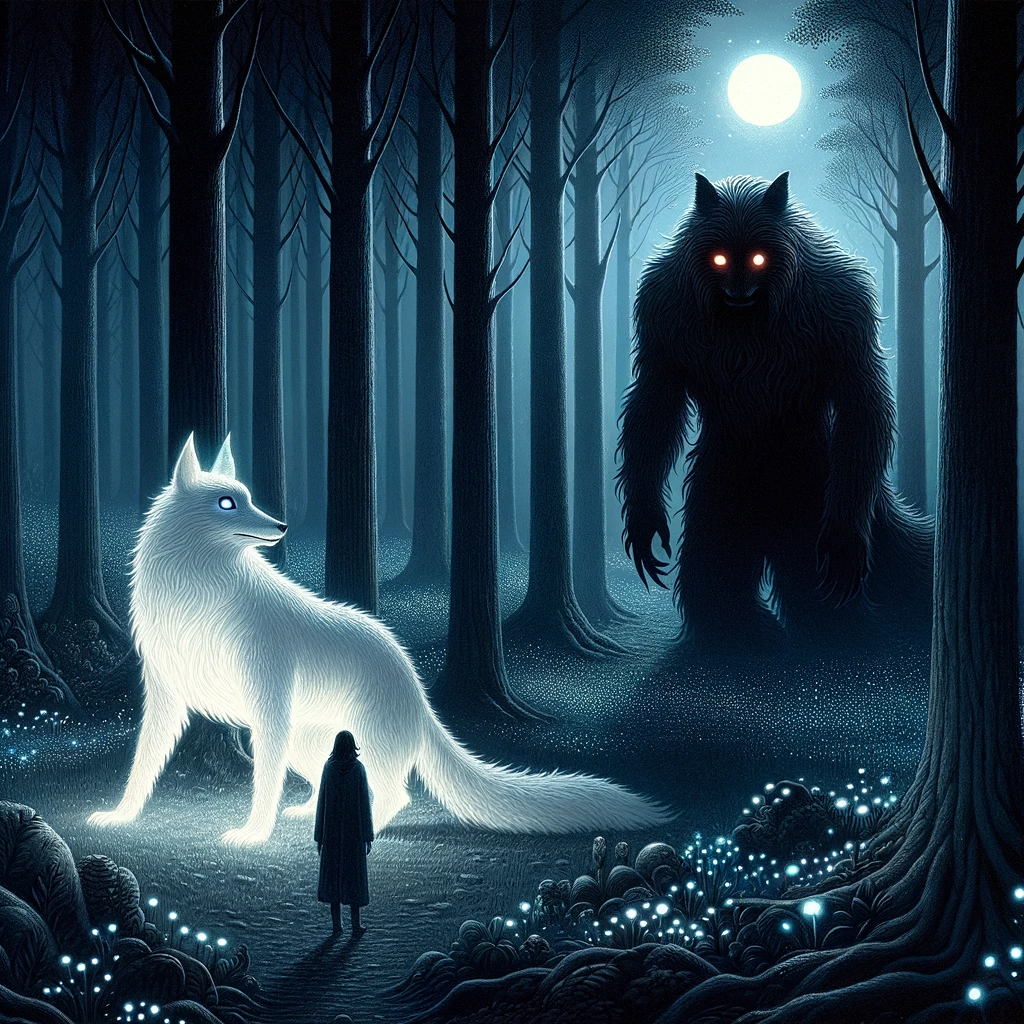The Cadejo, a creature steeped in the folklore of Central America, is a figure that embodies the complex interplay of fear, morality, and the supernatural that characterizes many mythological tales from around the world. This enigmatic being is said to appear in two primary forms: a white cadejo and a black cadejo, each embodying contrasting moral paths and outcomes for those who encounter them. The tales of the Cadejo, while varying slightly from country to country within the region, share common themes of protection, temptation, and the eternal struggle between good and evil.
Origins and Mythology
The origins of the Cadejo mythology are deeply rooted in the cultural amalgamation that defines Central America, blending indigenous beliefs with European folklore brought by Spanish colonizers. The creature is most commonly associated with countries such as Guatemala, El Salvador, Honduras, Nicaragua, and Costa Rica. Its name, “Cadejo,” is believed to derive from the Spanish word “cadena,” meaning chain, possibly referring to the sound of chains that is often reported to accompany the apparition of the Cadejo.
The Dual Nature of the Cadejo
The dichotomy of the Cadejo’s nature is perhaps its most fascinating aspect. The white cadejo, often described as a large, dog-like creature with glowing white fur, is said to be a guardian spirit that protects travelers and lost souls during the night, guiding them away from danger and towards safety. Its presence is comforting and is interpreted as a sign of divine protection.
Conversely, the black cadejo is depicted as a malevolent spirit, with dark, matted fur and glowing red eyes that instill fear in those who see it. This incarnation of the Cadejo is believed to lead people astray, luring them into dangerous situations or towards moral degradation. Encounters with the black cadejo are warnings, suggesting that one’s path in life may be leading to ruin.
Symbolism and Interpretation
The Cadejo’s dual nature serves as a powerful metaphor for the choices individuals must make between right and wrong, and the presence of both protective and destructive forces in the world. The white cadejo symbolizes guidance, purity, and the protective aspects of the divine, while the black cadejo represents temptation, danger, and the potentially corrupting influence of evil.
These creatures are not merely figures of fear but are imbued with a deeper moral significance. They remind people of the presence of unseen forces that can influence their lives and the importance of vigilance, moral integrity, and the protection of the vulnerable.
Cultural Impact
The Cadejo continues to be a significant figure in Central American folklore, reflecting the region’s rich cultural heritage and its people’s connection to the supernatural. Stories of the Cadejo are passed down through generations, not only as cautionary tales but also as expressions of a collective identity that embraces the mysterious and the mystical.
In literature, art, and film, the Cadejo has been reinterpreted in various ways, sometimes as a horror figure, at other times as a symbol of protection or a representation of the complex nature of human choices. These adaptations continue to breathe new life into the myth, ensuring its place in the cultural consciousness.

The Cadejo is more than just a myth; it is a cultural artifact that embodies the fears, hopes, and moral values of the people who tell its stories. It serves as a reminder of the unseen forces that shape our lives and the importance of the choices we make. As long as the tales of the Cadejo are told, they will continue to captivate and enlighten, offering a window into the soul of Central American folklore.
